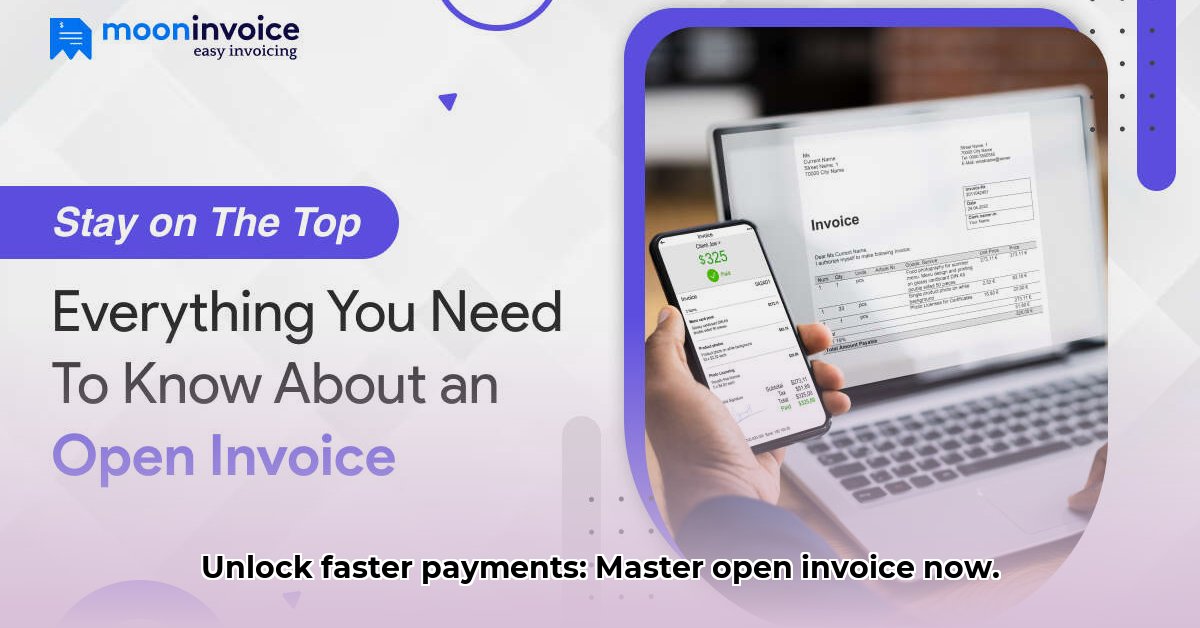
Open Invoice Meaning: Understanding the Fintech Implications
Ever chased down late payments, feeling the drag of unpaid invoices on your Fintech business? An open invoice represents any invoice not yet fully paid. While seemingly simple, its impact on your bottom line is substantial. In the fast-paced Fintech world, every unpaid invoice is a small leak that can ultimately sink your ship. This guide provides practical strategies to master open invoice management, accelerate payment cycles, and boost your profitability. For more Fintech insights, check out this helpful resource.
The Hidden Costs of Unpaid Invoices
Late payments are a common challenge, especially problematic in Fintech's high-velocity environment. But the consequences extend far beyond simply delayed revenue. Unpaid invoices often stem from:
- Invoice Errors: Minor inaccuracies (incorrect amounts, missing details) create significant delays.
- Payment Disputes: Client inquiries regarding charges – often avoidable with clear communication.
- Non-Payment: While rare, clients occasionally fail to pay despite invoices and reminders.
These issues disrupt cash flow, damage client relationships, and potentially lead to legal complications. Proactive management is essential to mitigate these risks.
Mastering Open Invoices: Strategies for Accelerated Payments
Fortunately, you can regain control. Implementing these strategies streamlines your processes and improves your financial health:
1. Leverage Automation for Efficiency
Automation is crucial:
- Automated Invoicing: Generate invoices instantly, minimizing manual errors and delays.
- Online Payment Gateways: Offer diverse payment options (credit cards, bank transfers, digital wallets) for client convenience.
- Automated Payment Reminders: Gentle, timely reminders increase on-time payments.
2. Streamline Your Internal Processes
Efficient internal processes are equally important:
- Efficient Invoice Matching: Ensure invoices and payments are correctly linked to avoid discrepancies.
- Crystal-Clear Payment Policies: Clearly define payment terms to avoid ambiguity.
- Robust Dispute Resolution: Establish a clear and efficient system for handling payment discrepancies.
3. Prioritize Communication
Proactive communication prevents many problems:
- Multiple Payment Options: Accommodate diverse client preferences.
- Easy-to-Understand Invoices: Use clear language, avoiding jargon.
- Regular, Friendly Reminders: Maintain consistent contact without being overly aggressive.
Mitigating Risk in Fintech: A Proactive Approach
Consider these common risks and mitigation strategies:
| Risk Category | Potential Risks | Mitigation Strategies | Consequences of Failure |
|---|---|---|---|
| Automated Invoicing Systems | System crashes, data loss, integration glitches | Redundant systems, regular testing, reliable backups, robust vendor support | Invoice delays, billing inaccuracies, cash flow disruption |
| Payment Gateways | Security breaches, payment processing failures | Strong encryption, fraud detection systems, multiple gateway options | Financial losses, customer dissatisfaction, reputational damage |
| Customer Communication Issues | Unclear invoices, missed reminders, slow dispute resolution | Crystal-clear communication, diverse payment options, efficient dispute resolution infrastructure | Late payments, customer dissatisfaction, reputational harm |
Navigating the Regulatory Landscape: Compliance is Key
Adherence to regulations is paramount. Ensure your systems protect client data and comply with data privacy laws (GDPR, CCPA) and payment processing regulations. Transparency and compliance are non-negotiable.
Choosing the Right Fintech Open Invoice Management System
Selecting the right automation system is crucial. Consider these factors:
- Integration Capabilities: Seamless integration with existing accounting software (QuickBooks, Xero) and other business systems is vital.
- Scalability: The system must adapt to your business's growth.
- Reporting & Analytics: Access to insightful data (DSO, payment trends) drives informed decision-making.
- Security: Robust security measures are essential to protect sensitive financial data.
- Cost: Assess both initial investment and ongoing maintenance costs.
- User-Friendliness: Ease of use ensures efficient adoption and utilization.
- Vendor Support: Reliable technical support minimizes disruptions.
Key Takeaways:
- Fintech solutions significantly improve invoice processing speed and accuracy.
- Automation reduces errors and frees up staff time.
- Data standardization is crucial for smooth system integration.
- Faster payment cycles strengthen cash flow and protect profit margins.
- Successful implementation requires careful planning and meticulous integration.
A Case Study (Illustrative): A mid-sized manufacturing company reduced its Days Sales Outstanding (DSO) by 20% and processing time by 15% after implementing an open invoice management system.
Call to Action: Assess your current open invoice management processes. Explore the available Fintech solutions to streamline your operations and accelerate payments. Don't let unpaid invoices hinder your business's growth.